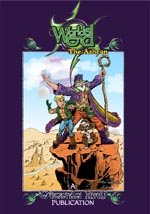Well as the nights draw in and get ever colder, I thought I’d just wish everyone a safe and enjoyable Bonfire celebration tonight.

For those of you from places outside the UK who maybe haven’t heard of the celebrations here, or wonder why they take place, here is a brief rundown of the events, which lead up to us having a night of bonfires and fireworks.
In 1605 a man called Guy Fawkes and a group of thirteen fellow conspirators got together and attempted to blow up the Houses of Parliament in London with 36 barrels of gunpowder, which they placed in the basement. The object of the exercise was to kill King James I and the king’s leaders.
The reason they wanted to do this was quite simply that, when Queen Elizabeth I died in 1603, English Catholics who had been persecuted under her rule had hoped that her successor, James I, would be more tolerant of the Catholic religion. James had, after all, had a Catholic mother. Unfortunately, James did not turn out to be more tolerant than Elizabeth and thirteen young men decided that violent action was the answer. It is important to remember the split from the Catholic religion and the creation of the Protestant religion was instigated when King Henry VIII had decided to remarry and the Pope had refused to give permission for the marriage to take place so Henry being Henry decided he would be the leader of the church in England and set up the Protestant religion.
Catholics had been forced to practise their religion in secret. There were even fines for people who didn't attend the Protestant church on Sunday or on holy days. James l passed more laws against the Catholics when he became king.
The group of young men led by Robert Catesby, plotted to kill King James I and blow up the Houses of Parliament, the place where the laws that governed England were made.
Guy Fawkes was one the group.
The plot was very simple, the next time Parliament was opened by King James I the young men would blow up everyone there with gunpowder. The men bought a house next door to the Parliament building. The house had a cellar, which went under the Parliament buildings. They planned to put gunpowder under the house and blow up Parliament, the King, maybe even the Prince of Wales, and the Members of Parliament who were making life difficult for the Catholics. Nowadays these conspirators would be known as extremists, or terrorists.
To carry out their plan, the conspirators got hold of 36 barrels of gunpowder - and stored them in the cellar, just under the House of Lords.
As the group worked on the plot, the young men realised that innocent people would be hurt or killed in the attack, including some people who even fought for more rights for Catholics. As a consequence of this some of the plotters started having second thoughts. One of them even sent an anonymous letter warning a friend of his, Lord Monteagle, to stay away from Parliament on November 5th.
This warning letter was given the King, his forces made plans to immediately stop these conspirators.
Guy Fawkes, who was to light the gunpowder, was in the cellar of the parliament with the 36 barrels of gunpowder when the authorities stormed it in the early hours of November 5th, was caught, tortured and executed.
It's unclear if the conspirators would ever have been able to pull off their plan to blow up Parliament even if they had not been betrayed. It has been suggested that the gunpowder itself was so old as to be quite useless, but this kind of questioning is irrelevant as Guy Fawkes and the other conspirators were caught before trying to ignite the powder, and so we'll never know for certain.
Even for the period, which was a notoriously unstable time, the Gunpowder Plot struck a very profound chord with English people. The traditional searching of the cellars of Parliament before the opening of each new session was instituted in 1678.
In fact, even today, the reigning monarch only enters the Parliament once a year, on what is called "the State Opening of Parliament". Prior to the Opening, and according to custom, the Yeomen of the Guard search the cellars of the Palace of Westminster.
On the very night that the Gunpowder Plot was foiled, on November 5th, 1605, bonfires were set alight to celebrate the safety of the King. In celebration of his survival, King James ordered that the people of England should have a great bonfire every year on the night of the 5th of November and this event is still commemorated annually in England by fireworks and burning ‘guys’ (effigies or manikins usually made from old clothes with papier-mâché heads) on bonfires.
Some of us English folks have been known to wonder, in a tongue in cheek kind of way, whether we are actually celebrating Fawkes' execution or honouring his attempt to get rid of the government.
So there you have it and for a little fun here is a link to a virtual firework display I found on the Internet created by Woodlands Junior School in Kent, so you can have your own display, even if you are unable to attend an event yourself:
Virtual Fireworks Display
Please take time to look at the other wonderful stuff on the school website.
Until next time have fun!
Tim Perkins…
November 5th 2008












































No comments:
Post a Comment